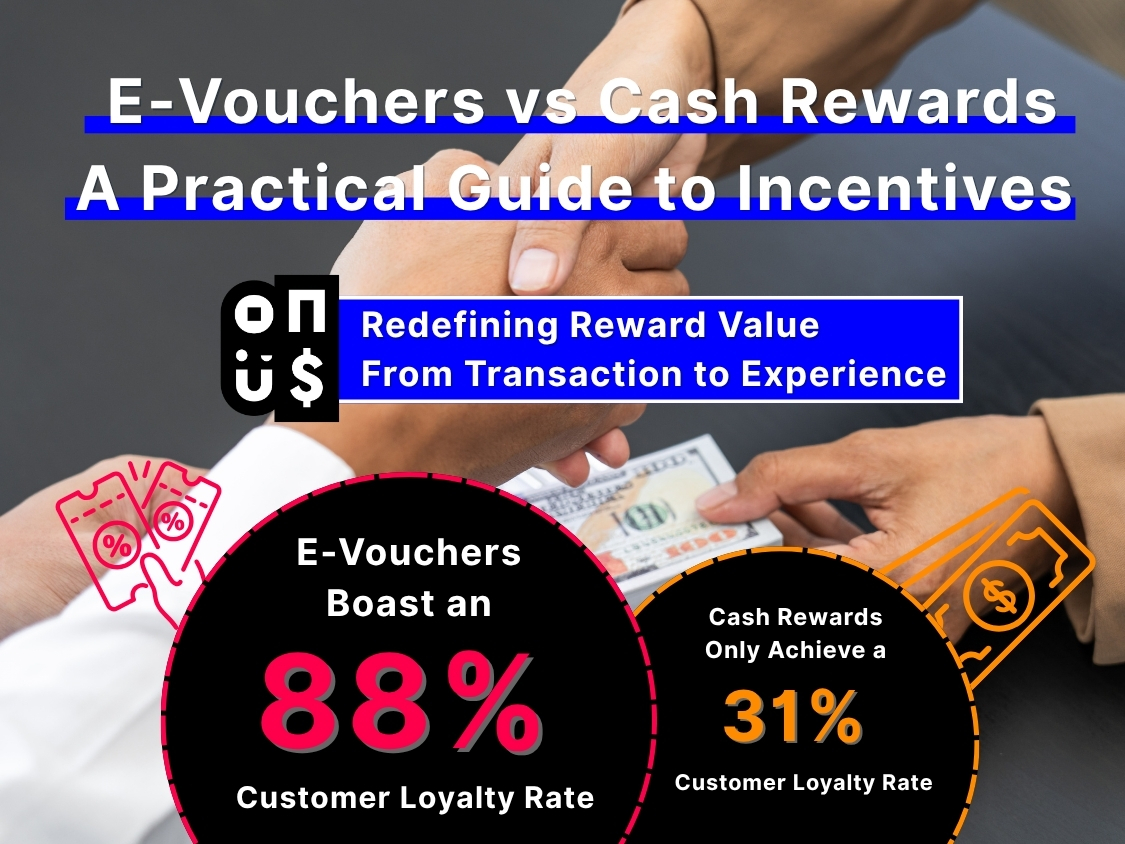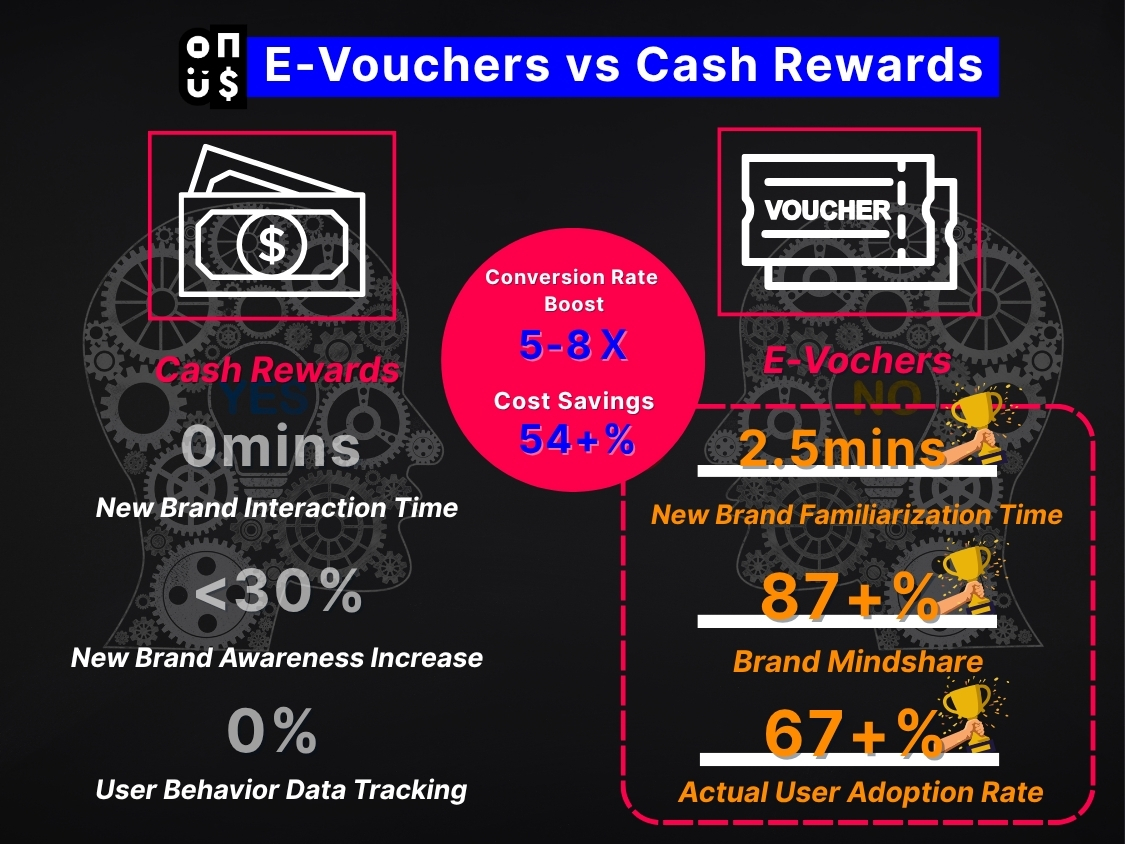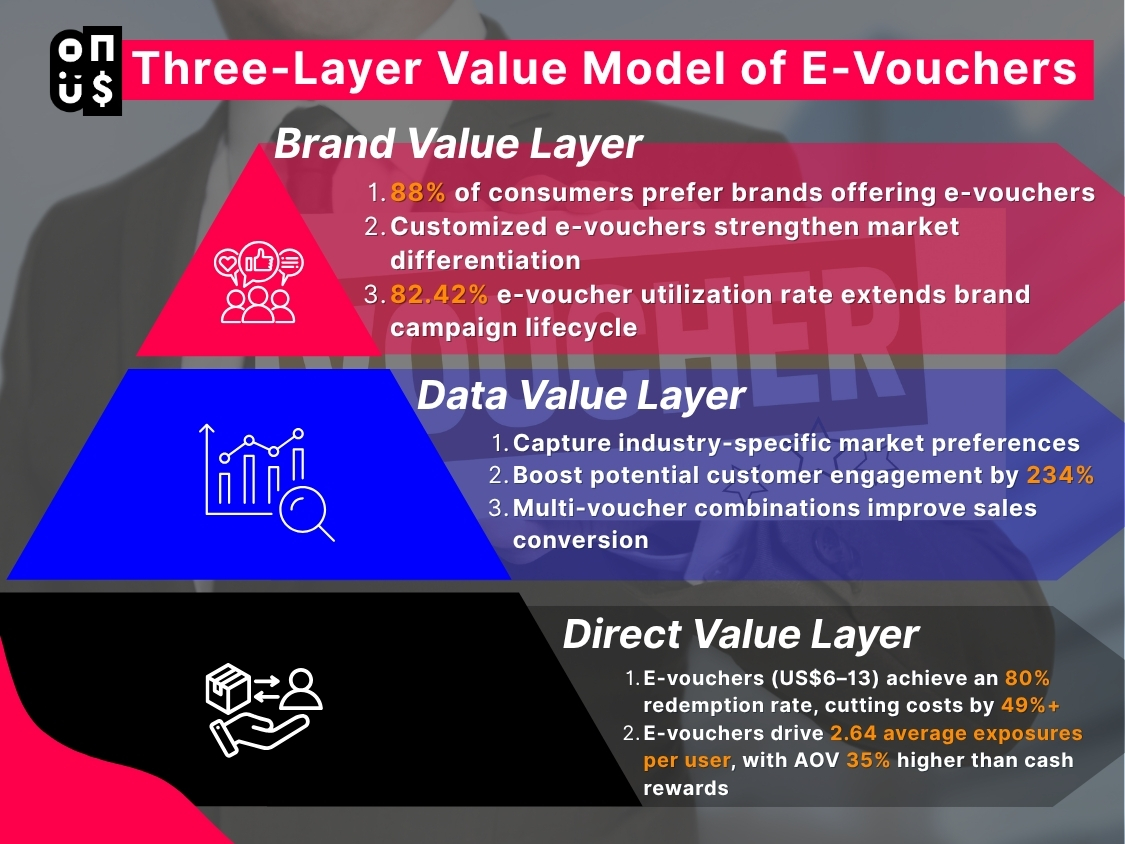Customer Engagement
E-Vouchers vs Cash Rewards: A Practical Guide to Incentives

E-Vouchers vs Cash Rewards: A Practical Guide to Incentives
In Hong Kong's evolving loyalty program landscape, where consumption voucher schemes have transformed consumer behavior, understanding the shift from cash to digital rewards is crucial for customer retention strategies.Businesses always want to know: How can we get customers to stick with us when everyone has the same budget?
Our research in Asia-Pacific shows something interesting: 88% of people think more of a company after getting an e-voucher, but only 31% say the same about cash rewards.
This difference gets to the heart of what motivates customers and builds business value.
What People Really Want: Understanding Choices
People remember brands more when they get e-vouchers. About 87% of voucher recipients remember the brand (similar to Hong Kong's successful Octopus rewards and yuu loyalty program members), while only 29% of those getting cash can. That's because experiences stick in our minds better than just numbers.
Cash is quickly forgotten. People see it as just part of their usual income and don't think about the brand that gave it to them. But people spend about 2.5 minutes looking at a voucher, which helps them remember the brand. Research shows that people who used food and drink vouchers talk about the brand almost three times more than those who got cash, even three months later.
Giving choices matters. When people can pick from a few options for their non-cash reward, they open the reward 55% of the time, and about 65% use it. That’s much better than single-shop vouchers, which are used less than 35% of the time. Letting people choose makes them feel valued and builds stronger ties with your brand.

Beyond the Numbers: The Real Value of Rewards
The usual way to figure out if a reward is worth it is to look at the cost versus the money it brings in. But that misses the bigger picture of E-vouchers. We looked at 111 campaigns with over 400,000 e-vouchers and saw three levels of value.
First, you get direct results (Consumption voucher scheme impact). Vouchers worth between US$6 and $13 work best. People open them 55% of the time, and 80% end up using them. When they do, they also spend more money than people who got cash. This means you get a reward and extra sales.
The data you collect (Customer engagement metrics) is very valuable in the long run. Every time someone uses a voucher, you learn when, where, and what else they bought. Using this info to improve your marketing can make it 40% more accurate and get up to 234% more people interested. This information helps you go from just getting people in the door to really understanding what they do.
The impact on your brand (Corporate employee benefits ROI) is big. For example, an insurance company found that every dollar they spent on cash rewards brought in only HK$1.30 in sales. But when they switched to giving out vouchers for health checks and meals, every dollar brought in HK$2.80, and customers stayed with them 18 months longer.

The Right Reward at the Right Time
This loyalty program strategy aligns with Hong Kong's digital transformation trends, where spend-based rewards and points redemption systems have become the norm.E-vouchers are best when they fit into people's lives. We use data to figure out the best rewards for different situations.
If someone just signed up (within 30 days), giving them a simple voucher for coffee gets them to open it 91% of the time and helps them start using your brand. If they're already a customer, giving them vouchers for nice meals or fun activities works well. If they haven't been around for a while, sending them vouchers for brands they usually use can get them to remember you three times better than cash.
Where you send the reward is also key. Vouchers sent through app programming interfaces and texts get opened 85% and 80% of the time, which is much better than email's 50%. That's because people pay more attention to rewards they get when they're thinking about using them.
Creating a Reward System: Benefits for Everyone
The best E-vouchers create a win for your company, your customers, and the stores involved. We work with over 3,000 brands and have seen how well this works. Our network covers all sorts of things people do, from buying groceries to eating out to decorating their homes, so there's a reward for everyone.
One supermarket chain saw 18% of their sales come from people using vouchers. Sharing data also helps you understand your customers better. By seeing what people buy from different stores, you can learn what they like. If someone is interested in health, sending them vouchers for healthy restaurants or sports brands can make them 40% more likely to use the voucher.
The Future: Rewards as a System, Not Just a Tool
For Hong Kong businesses navigating the post-consumption voucher era, these insights are particularly relevant. With platforms like AlipayHK and Octopus setting new standards for digital payment rewards,the e-voucher market is expected to reach US$1.5 trillion by 2032. E-vouchers are becoming more than just a way to get people to buy things. They're now a key part of building relationships with customers.
Our data shows that using the right non-cash reward strategies can get you 2.3 times more value for every dollar you spend. This isn't just about better numbers. It's about making customers feel more connected to your brand.
In the future, with better artificial intelligence for suggesting rewards and more cooperation between businesses, E-vouchers will do more than just target the right people. They'll guess what people need and offer solutions before they even know they need them.
On-us believe E-vouchers will be a key part of growth for businesses. They'll guide companies toward focusing on the customer experience.Take action now!
Learn about On-us
Let our team show you how E-vouchers can help your business grow. Book a Demo Now and see how you can be the next success story with our reward strategies.











.svg)






.jpg)


